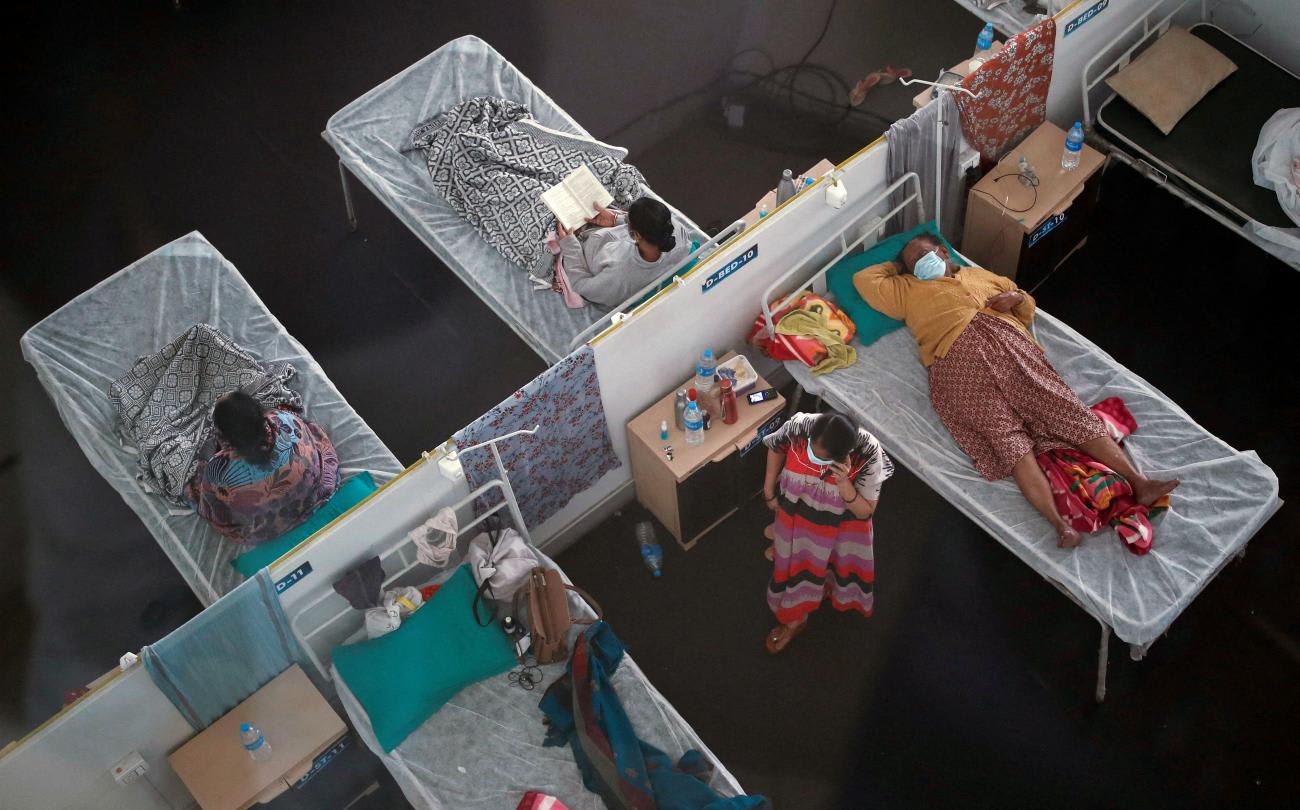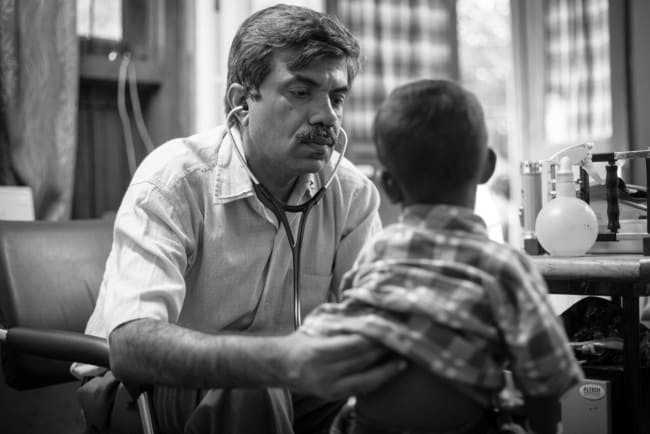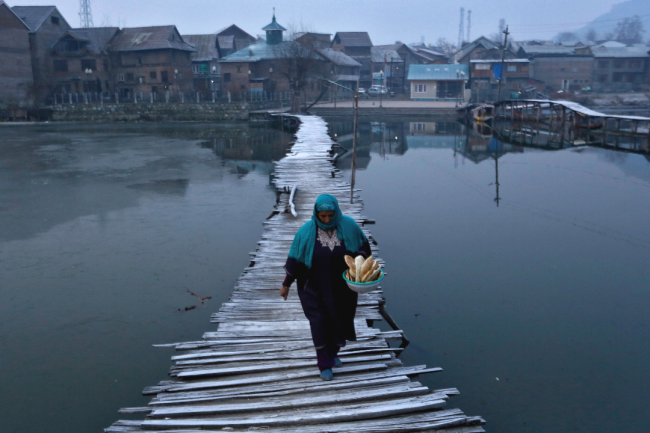In early 2021, the second wave of the COVID-19 pandemic in India revealed, to the shock of many, the woeful state of the country's intensive care infrastructure. Now, in a bid to help the seriously ill, a coalition of organizations, companies, and individuals is working on making small critical care units available in poorly equipped hospitals throughout the country.
Dubbed "10 Bed ICU," the project is a cooperative effort involving India's state governments to set up intensive care unit (ICU) facilities in hospitals and, at the same time, provide an online telehealth platform that connects ICU patients and their local health-care providers with specialist physicians located in faraway medical schools.
The 10 Bed ICU project was set up last year by a number of business leaders, including Srikanth Nadhamuni, CEO of Khosla Labs and chairman of Novopay Solutions, a digital banking company; Raj Pakala of ETG Global Services, an ecommerce company; and Nagesh Reddy Gouravaram of Smart IMS, an information technology provider.
"During the second wave of the pandemic, I was getting calls asking for help finding beds and ventilators every day"
Srikanth Nadhamuni, CEO of Khosla Labs
"During the second wave of the pandemic, I was getting calls asking for help finding beds and ventilators every day," Nadhamuni said. "My friend told me that the small towns and villages are worse off as the hospitals don't have ICU facilities. So I came up with the idea of setting up small ICU units with ten beds in public hospitals in these areas."
The project is also supported by several nonprofit organizations, including eGovernments Foundation and Karuna Trust, as well as various private donors. The initial rollout in 2021 covered forty hospitals in the southern state of Telangana, but has since expanded to 200 hospitals across eight states.
Athuan Gonmei, a resident of Tamenglong, a hilly district in the northeastern state of Manipur, recalls how one of the new ICUs at the local district hospital helped his 96-year-old grandmother recover from a severe case of typhoid, a bacterial disease, this past August. "We don't expect these kinds of facilities," Gonmei said in a phone interview. "To our surprise, we found a very hygienic and standard ICU. If it wasn't there, my grandma would have passed away."
According to a survey published by Critical Care Medicine Journal, India had 2.3 ICU beds per 100,000 people in 2017, placing it 17th among twenty-three Asian countries in critical-care bed capacity. A 2020 study by the Center for Disease Dynamics, Economics and Policy; Amity University; Imperial College London; and Princeton University pointed to significant regional disparities. While the populous state of Uttar Pradesh was estimated to have 6.5 ICU beds for every 100,000 people, the remote region of Manipur boasted just 3.6 beds. The shortage of critical-care services became especially apparent during the second wave of the pandemic, when harrowing stories of patients desperately in need of ICU beds were widely shared on social and mainstream media across the world.

The 10 Bed ICU project works in close partnership with state governments. It purchases the ICU equipment and then donates it to the states which provide the space for setting up ICU facilities in existing public hospitals, as well as electricity, oxygen, medical supplies, nurses, physicians, and technicians needed to get the units working.
Because small towns and villages in India lack medical specialists—including pulmonologists and anesthetists, who are essential for intensive care—there existed the need for a telehealth platform, which uses CARE software. An open-source patient management tool, CARE makes data captured in the ICU units visible to specialist doctors monitoring patients remotely. It also enables physicians who are specialist to connect with the local medical staff through WhatsApp integration, and lets them view the patient through a live camera feed.
"We use public medical schools as a hub and link them with three to four hospitals where the 10 Bed ICU facilities are set up," explained 10 Bed ICU co-founder Nadhamuni. "At the hospital, we connect all the ICU equipment to a local area network. We also provide servers to store all the data coming through the network. At the hub, we create a command-and-control center with large television monitors. This is where the specialist can talk to the local medical staff and monitor the patient in real time."
Because small towns and villages in India lack medical specialists, telehealth platforms are set up and link to specialists in medical schools
Setting up ICUs, even virtual ones, in remote parts of India has not been without challenges. Questions around regulating these tele-ICUs still remain unanswered.
"Working with the government takes time, sites are not ready and decision making is slow," said Nadhamuni. "Owing to these factors, the project has been delayed sometimes. We also face problems because the internet and electricity are not always available."
The project recently started training local doctors and nurses in intensive care, and is training them how to operate ICU equipment and the telemedicine software. "We have already started basic critical care training in Manipur in collaboration with Hong Kong University," says Bisoya Loitongbam, northeast program coordinator for 10 Bed ICU. "Going forward, we intend to provide advanced training. More importantly, we plan to develop a regional training center at the nearby public medical school," she said.
The project also seeks to encourage community ownership by strengthening existing community-led forums, known as Rogi Kalyan Samitis, which are found in government hospitals throughout the country. They provide local fundraising and increased accountability in the hospitals.
10 Bed ICU is just one example of government and private sector collaboration to improve access to ICU-level health care in India. "Mission ICU" is another nonprofit initiative partnering with three state governments to provide similar services.
In last year's budget, the central government unveiled a new health initiative, known as the Prime Minister Atmanirbhar Swasth Bharat Yojana initiative, which aims to provide critical care units in hospitals in 602 districts and twelve central institutions over the next four years.
Meanwhile, health authorities at all levels of government are actively seeking collaboration with nonprofit organizations and private companies to expand the availability of tele-ICU services in public hospitals. Most existing collaborations are concentrated in the southern and northeastern parts of the country. Several northern states, including Rajasthan and Uttaranchal, have recently invited proposals to set up tele-ICUs.
"Tele-ICU has huge potential in a country like India that is so geographically expansive and where there is such a disparity between the availability of resources and where the majority of medical needs are located," said Dr. Swapneil Parikh, an internal medicine specialist and clinical researcher based in Mumbai. "However, technology is not some panacea. I don't think it can meet all the needs, but it definitely has a place."
For Parikh, funding and the other resources required for running tele-ICU services remain a challenge.
"You have to remember that ICUs need to be supported with an operating theater, blood bank, dialysis unit, and radiology services," he added. "So, there are a lot of infrastructure requirements that go on around ICUs. If we are thinking of dropping tele-ICUs in hospitals where none of this exists, then it is very challenging."













